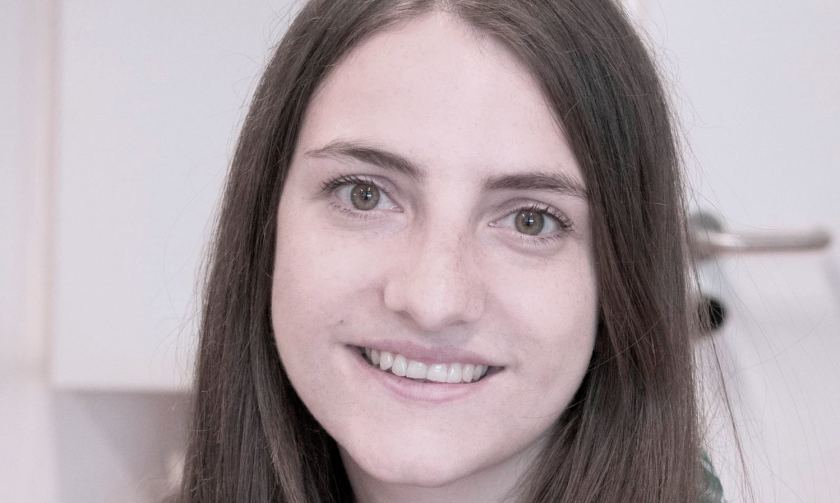Outstanding master thesis on the structure and function of a bacterial enzyme honoured

Lena Graß has received an award by GBM for her master thesis. © FU Berlin
On December 17, 2018, Lena Graß, a PhD student from the Structural Biochemistry Group at Freie Universität Berlin, was awarded the Master Prize of the Gesellschaft für Biochemie und Molekularbiologie e.V. (Society for Biochemistry and Molecular Biology) (GBM). For her master thesis at Freie Universität Berlin and the MX beamlines of BESSY II, she deciphered the structure and function of a so-called RNA helicase.
These bacterial enzymes can alter the activities of RNA molecules and influence the life cycle of bacteria. As part of her master's thesis, Lena Graß investigated a RNA helicase from the intestinal bacterium Escherichia coli. A closely related enzyme from the bacterium Borrelia burgdorferi, the causative agent of borreliosis, is essential for the infectivity of these bacteria. A better understanding of this enzyme could help to develop new drugs to block the enzyme.
Graß produced the enzyme using genetic engineering methods. Using macromolecular X-ray crystallography on the MX beam tubes of the Joint Berlin MX Laboratory at BESSY II, Graß was able to elucidate how the enzyme is constructed and folded in detail.
Graß began her master's degree in biochemistry at the Eberhard Karls University of Tübingen in 2015 and completed her master's thesis in the structural biochemistry group of the Freie Universität Berlin in cooperation with the macromolecular crystallography group at the Helmholtz-Zentrum Berlin. At the beginning of 2018, she completed her master's degree with the highest grade. She is currently doing her doctorate in the structural biochemistry group at Freie Universität.
red.
https://www.helmholtz-berlin.de/pubbin/news_seite?nid=20262;sprache=en
- Copy link
-
Ernst Eckhard Koch Prize and Innovation Award on Synchrotron Radiation 2025
At the 27th BESSY@HZB User Meeting, the Friends of HZB honoured the dissertation of Dr Enggar Pramanto Wibowo (Friedrich-Alexander University Erlangen-Nuremberg). The Innovation Award on Synchrotron Radiation 2025 went to Prof. Tim Salditt (Georg-August-University Göttingen) and Professors Danny D. Jonigk and Maximilian Ackermann (both, University Hospital of RWTH Aachen University).
-
Synchrotron radiation sources: toolboxes for quantum technologies
Synchrotron radiation sources generate highly brilliant light pulses, ranging from infrared to hard X-rays, which can be used to gain deep insights into complex materials. An international team has now published an overview on synchrotron methods for the further development of quantum materials and technologies in the journal Advanced Functional Materials: Using concrete examples, they show how these unique tools can help to unlock the potential of quantum technologies such as quantum computing, overcome production barriers and pave the way for future breakthroughs.
-
Peat as a sustainable precursor for fuel cell catalyst materials
Iron-nitrogen-carbon catalysts have the potential to replace the more expensive platinum catalysts currently used in fuel cells. This is shown by a study conducted by researchers from the Helmholtz-Zentrum Berlin (HZB), Physikalisch-Technische Bundesanstalt (PTB) and universities in Tartu and Tallinn, Estonia. At BESSY II, the team observed the formation of complex microstructures within various samples. They then analysed which structural parameters were particularly important for fostering the preferred electrochemical reactions. The raw material for such catalysts is well decomposed peat.
